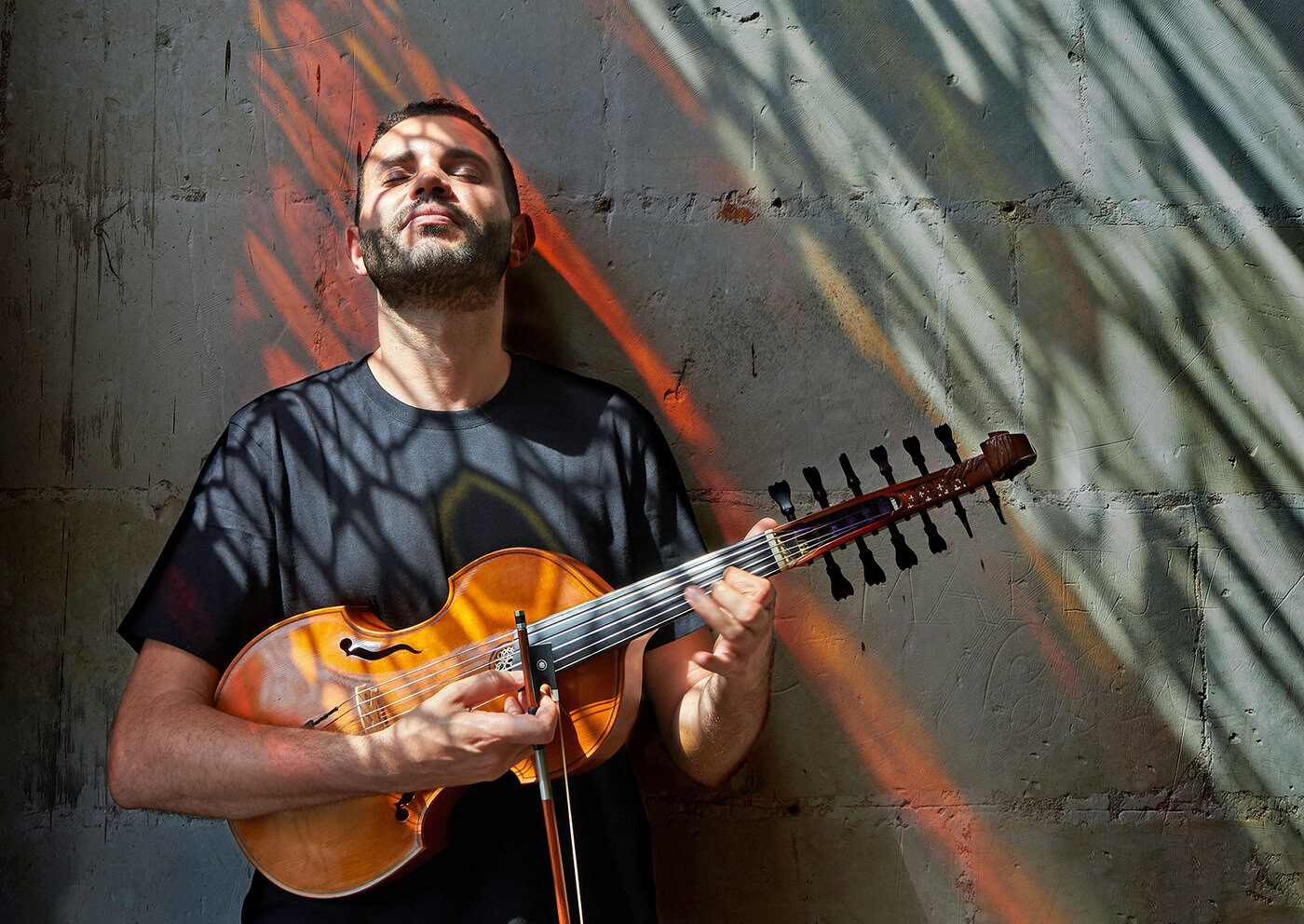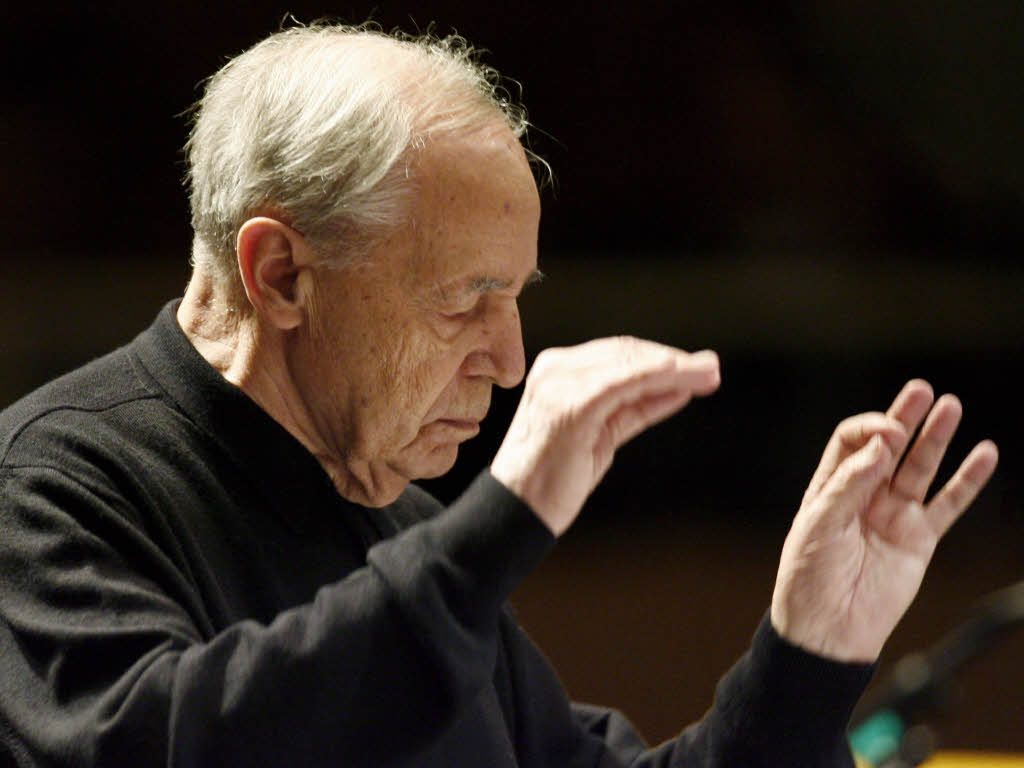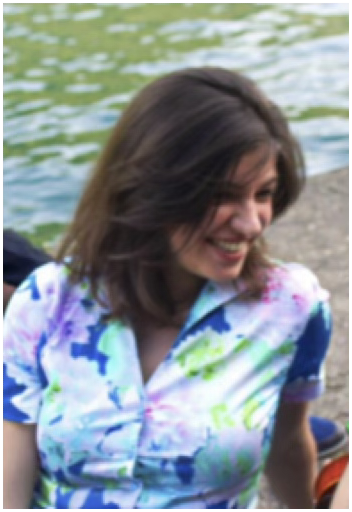Jasser Haj Youssef - between viola d'amore and contemporary ballet
Jasser Haj Youssef composes the music for Ihsane, Sidi Larbi Cherkaoui's new world premiere, which opens the 24/25 season of the Ballet du Grand Théâtre de Genève. Interview.
Tunisian violinist, composer and musicologist, virtuoso of the viola d'amore, Jasser Haj Youssef has a taste for experimentation and the unexpected.

Jasser Haj Youssef, this is your first collaboration with choreographer Sidi Larbi Cherkaoui and the Grand Théâtre de Genève. How did it all come about?
The starting point was, above all, a mutual knowledge and appreciation of each other's work. So much so, that when we first met a little over a year ago, we already knew we were going to work together on this project, and so we spoke directly about this creation. This is also my first collaboration with the Grand Théâtre de Genève, and I'm delighted!
"Ihsane" is Arabic for "an ideal of benevolence and goodness". In it, the choreographer goes back to his Moroccan roots and "explores themes of loss and plural identity through a personal and collective narrative". The term also evokes a racist and homophobic crime that took place in Liège in 2012. Did these themes particularly appeal to you?
At the start of the project, Sidi Larbi and I were talking mainly about benevolence and spirituality... I didn't know the story in question, so I didn't take it into account in my composition. It was only later that I learned that Ihsane is also the name of a boy who was sadly attacked in Belgium.
How did you go about creating the music for Ihsane? Was the music written first, the compositional gesture, before the choreography? Did you use the rehearsal studios at the Grand Théâtre de Genève to capture the bodies and gestures, then render them through musical writing?
I first met the dancers of the Ballet du Grand Théâtre a year ago. Then I mostly had direct exchanges with Sidi Larbi, in particular about ideas, desires, choices of instrumentation, styles, themes, texts and languages... I first composed pieces especially for this project, on the basis of which choreography was then created and practiced by the dancers. The music for this ballet includes many new, unedited compositions, but also a number of my own pieces from the album Reminiscenceas well as a few traditional pieces that I've adapted and arranged.
Is there an element of improvisation in the music and choreography?
Yes, in the manner of early classical music, there's an improvisation at the start which then becomes fixed. Back in the day, when Johann Sebastian Bach improvised and made a cadenza, it was written down, and then other musicians played exactly the same notes as the cadenza that had originally been improvised. We also sometimes adopt this kind of principle in the music ofIhsane. As for the choreography, there are two moments in the ballet where it was basically improvised. But we loved this improvised choreography so much that we end up trying to reproduce it in every performance!
You compose the music and also perform it on stage. What has this new stage experience been like for you?
Ballets dance more often to recordings than to live music. For me, composing for a ballet and working with the dancers was both a real challenge and a wonderful experience that enabled me to discover a new world and observe an intimate relationship being created between the dancers and the musicians. Until now, I was used to composing and performing music on stage with musicians only. The added difficulty here is that we're also playing with the dancers! We always have to have certain musical cues. The dancers have to adapt to the live musical interpretation, but the musicians sometimes also have to follow the tempo of the dancers. I feel a bit like a go-between, trying to respond as best I can to the choreographer's vision. At the same time, as a composer, I have to take into account the needs of the musicians, particularly in terms of their integration time, as they don't all have the same rhythm. We're not isolated from each other. It's an interdisciplinary collaboration in which you also have to listen to the set, the lighting, the dramaturgy, each other's opinions... It's a job of adaptation really.
This ballet brings together a diverse and original team of artists in the same space. It's an opportunity for you to cross-fertilize your own artistic universe with that of the other associate artists. How did you go about choosing the instrumentalists and singers who will accompany you?
Sidi Larbi and I both had our own ideas about instrumentation. His broader vision of the project - in terms of dramaturgy and story - led to interesting exchanges on the choice of instruments and performers. The decision to include an oud in the ensemble rather than a double bass, for example, enabled me to propose the Iranian musician Yasamin Shahhosseini. Because the female interpretation and the Persian playing of the oud are two elements that bring a really particular color and depth, and therefore very different from the playing of Arab musicians, for example. The presence of a woman in the ensemble also seemed fundamental to me, as it brings a certain balance. The mix between the instruments chosen is never obvious, and at the same time it works, because each of the artists asserts a creative singularity: the Western Rhodes piano of the 70s, the voice of the Lebanese singer Fadia Tomb El-Hage, trained in the written, classical European tradition, the percussion of Gabriele Miracle Bragantini, the baroque viola d'amore, the Persian oud, the Moroccan singing based on oral tradition... we are at once so different and our multiple experiences create an enriching complementarity!
Your score is eclectic and evocative. By combining them with the energy of the performers, you breathe new life into the texts of the great Eastern thinkers of the 13th century.e century...
The choice of repertoire is a real challenge for the performers! Among the few works I chose was a very rare piece from the ancient Arabic repertoire, in fourteen beats, which few Arabic-speaking musicians still sing today. For IhsaneSidi Larbi was inspired by the city of Tangiers, from which his father hails. So the idea was also to pay tribute to traditional Andalusian and Moroccan culture, by incorporating three pieces, two of which are played in a very traditional way. The third, which opens the ballet, is a version to which I have made a very pop arrangement. Ottoman music, but also an ancient Egyptian mode, inspired some of the compositions created for this ballet. From the sounds of African music to the magnificent Lamento di Tristano of medieval Italy! I also wanted the Persian language to have a place in the score, by composing a piece based on an original text by Rûmi, sung in Persian by Mohammed El Arabi-Serghini (of Moroccan origin). Similarly, a poem by Ibn Arabî is magnificently interpreted in the original Arabic by Kazutomi Kozuki, a Japanese dancer and member of Compagnie Eastman. To do this, we had to find this dancer's strong points...
How was your score received by the performers?
The music ofIhsane is rich in influences and demands. And bringing it all together was a real challenge, because the European ear is more used to listening to minor or major, than to micro-intervals. I'm trained as much in the great Arab tradition as in Western classical music, and I love the European Baroque and Classical repertoire just as much as the thousand-year-old maqâms. As a composer, I wanted above all to preserve all the subtleties to be found in the playing of Persian, Arabic or Oriental music in general, and to avoid neutralizing or suppressing certain elements of the rich musical culture of this region. As a result, in several passages of the ballet, some of the music may seem very daring to the audience. At the same time, we had to transmit this music as clearly as possible to the dancers, so that they could easily appropriate the choreographic language. They had to train themselves to dance to rhythms in seven, ten and fourteen beats... very different from those to which they are accustomed. The experience taught us all new ways of approaching music. And that's what's so great!
Isn't musical writing, in short, also a mode of choreographic expression in your opinion?
Music and learning to play an instrument are very much about movement. There are gestures to reproduce that every musician takes years to learn. For a violinist, for example, it means being able to move the bow and fingers with subtlety... When I'm faced with complex rhythms that come from elsewhere, such as rhythms composed of fourteen beats, thirteen beats, or sometimes thirty-two beats, I start by dancing them, so that these rhythms "enter" my body and it becomes natural for me to play them. All music is based on rhythm, gesture and movement, which are fundamental to the harmonization of bodies and instruments! You can't play by being very static! Playing an instrument is therefore a choreographic movement. But writing music is also choreography, because it takes into account all the movements of the musicians and singers! And, above all, after the composition, there's the joint work, on stage, with the dancers, where we depend a lot on their gestures, their breathing, their fatigue, their shape, and many other elements...
You like directors and projects to surprise you...
I like to get involved in projects that have a purpose, a meaning, a real need, projects that are both special and authentic, and that require me to think. I need to explore new artistic horizons, which leads me to dance, for example! Ihsane I found myself working on texts in Arabic, English, Italian, Spanish, Syriac... The diversity of languages, rhythms and styles makes it both a rich and complex experience. From an ancient Italian song to a traditional Moroccan or Iranian chant, not forgetting contemporary compositions. It's not easy to bring together such different performers on stage. That's precisely the experimental dimension I love in creation!
You are one of the few specialists in the viola d'amore. What sparked your interest in this mysterious instrument?
I originally trained as a violinist. Then, in a quest for timbres and sounds, I was looking for an acoustic instrument, with lower tones and more strings than a violin. My research into organology and music history led me to the viola d'amore, which I first discovered theoretically. It's a European Baroque instrument, for which Johann Sebastian Bach and Vivaldi both composed. It never existed in the East, with the exception of Turkey during the Ottoman period, before disappearing in the 18th century.e century. At the time of my research, this instrument was even rarer and more difficult to find among luthiers than it is today. But I was determined to see it up close, until the day an Italian-born stage director told me that a viola d'amore made especially for her had been offered to her! This happy coincidence gave me the chance to play it for the first time, before a luthier finally made one to measure for me. It's true that today I play the viola d'amore much more than the violin!
Through your albums, you open up a new path in the knowledge and history of the baroque viola d'amore. There was "Resonance", in which you propose a fascinating journey from the 17th to the 20th century.e century to the present day. Then, more recently, "Reminiscence"...
Yes, Resonance is a live album released in 2015 and recorded at the Théâtre de la Ville in Paris. Reminiscence was produced following a long residency at the Château de Chambord, where it was recorded in 2023. Both albums are indeed centered around the viola d'amore, a natural choice. Thanks to the strings made especially for me, my viola d'amore allows me to obtain different chords, sounds and timbres that I particularly like. I can navigate between oriental, jazz and classical styles, and play in all keys! A historically tuned viola d'amore, on the other hand, would only allow me to play as it was played at the time, i.e. in D major or D minor.
Sacrifice is the common thread running through the Grand Théâtre's 2024-2025 season. How do you relate to the themes of sacrifice and identity?
In fact, when you make this choice in life, to be an artist, it's already a sacrifice! Moving away from our family, from our comfort zone, to live our childhood dreams and follow our needs to the end, that's a sacrifice! At some point, we choose to sacrifice our lives to do what we love. But I still have strong links with Tunisia, and I sometimes perform at the Carthage International Festival or in Hammamet. It's also very important for me to keep a foothold in Monastir, my hometown, which I left to develop artistically. Identity is a big subject, but as far as I'm concerned, I'm at peace with myself, because I know my cultural origins well. Knowing and playing Arabic classical music has enabled me to go and experience other things, in classical music, in jazz and even with a ballet! I think my strength lies precisely in having a strong identity, which allows me to go beyond borders, without being afraid of others, and to discover and learn from other cultures. Today, let's say I feel a bit like a citizen of the world, or simply a free soul. A soul because it can circulate just about anywhere.








